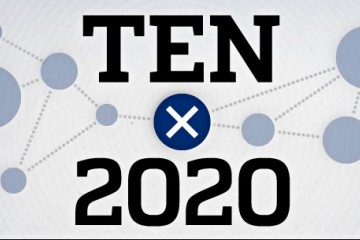In 2013, Johns Hopkins University President Ronald J. Daniels laid out 10 goals, grouped under four priorities, that add up to one vision the university seeks to achieve by the year 2020. Now the Johns Hopkins community is invited to review the Ten by Twenty progress report, which was released today, to see where Johns Hopkins stands on its ambitious path for the future.
From the beginning, Daniels said that the plan is bold and the road is not an easy one. The original Ten by Twenty report outlines a number of challenges, including the need for interdisciplinary research and education in a highly decentralized environment; changing expectations for undergraduate education; declines in research and clinical funding; and pressing economic needs in Baltimore and communities across the country.
"The goals seek to chart a course for the university that meets the looming challenges and captures the boundless opportunities ahead," Daniels said in that report, "while building on our strengths and honoring our history and traditions."
The new progress report offers 30 snapshots of successful programs and projects that have helped Johns Hopkins advance the Ten by Twenty vision. New arts-focused buildings and resources in Baltimore's Station North Arts and Entertainment District, collaborative research to assist military veterans and help children with autism, innovation in PhD education, and investments in community schools are a few examples. The progress report also includes a series of short videos in which faculty, students, and staff discuss how they think Johns Hopkins is doing and pose questions about the future to the president.
"Since we officially launched the Ten by Twenty in 2013, the conversation about our university's future has inspired progress toward our goals, illuminated the work yet to do, and ignited exciting new ideas," Daniels said in a message sent to the university community today.
He said one of those innovative ideas is a new crowdsourcing platform called the Idea Lab, which will post challenges and collect ideas from throughout the university. The Idea Lab's first two challenges are open now. The Ten by Twenty Challenge uses the One University goal as a theme for ideas that will help knit the university community together. The top ideas will receive up to $20,000 for implementation. Additionally, ideas for Diversity Innovation Grants are being crowdsourced for the first time on the Idea Lab.
The Ten by Twenty was created with input from more than 1,000 faculty, students, staff, deans, trustees, and alumni. The progress report, which includes links for viewers to comment on each of the goals, and the Idea Lab are both intended "to keep the conversation about our university going," Daniels said.
Posted in University News
Tagged ten by twenty









